Data will never replace experience and common sense
Sedum plants, also called stonecrops, part of the Crassulaceae genus, require very little water to survive. The fleshy, plump leaves store water, making Sedums tolerant of drought, dry and harsh conditions. All plants need water, and Sedums are no exception — the trick with the succulent type of plants is having some water but not too much.
In a natural or native environment where Sedums grow the soils are well‐drained thus having maximum water retention of around 25% of the soil thickness.
At the maximum water retention (field capacity) this still leaves an air content of 15%‐30%.
Any higher field capacity or oversaturation (ponding water) reduces air content and increases stress on Sedum plants, soil organisms, and other biological processes.
By nature, Sedums have no effective “defense system” against excessive water content in the soil. In comparison, many other plants are able to increase evaporation, guttation, or have other ways of transpiration including air storage cells.
On the opposite side and in situations without accessible water (wilting point), Sedums have, like all succulents, excellent strategies of survival. Unlike most other plants, Sedums are specialists in water conservation and water storage. They can utilize water stored in their cells and they can drastically reduce evaporation. This genetic property gives Sedums a real advantage on shallow and balanced soils during dry conditions.
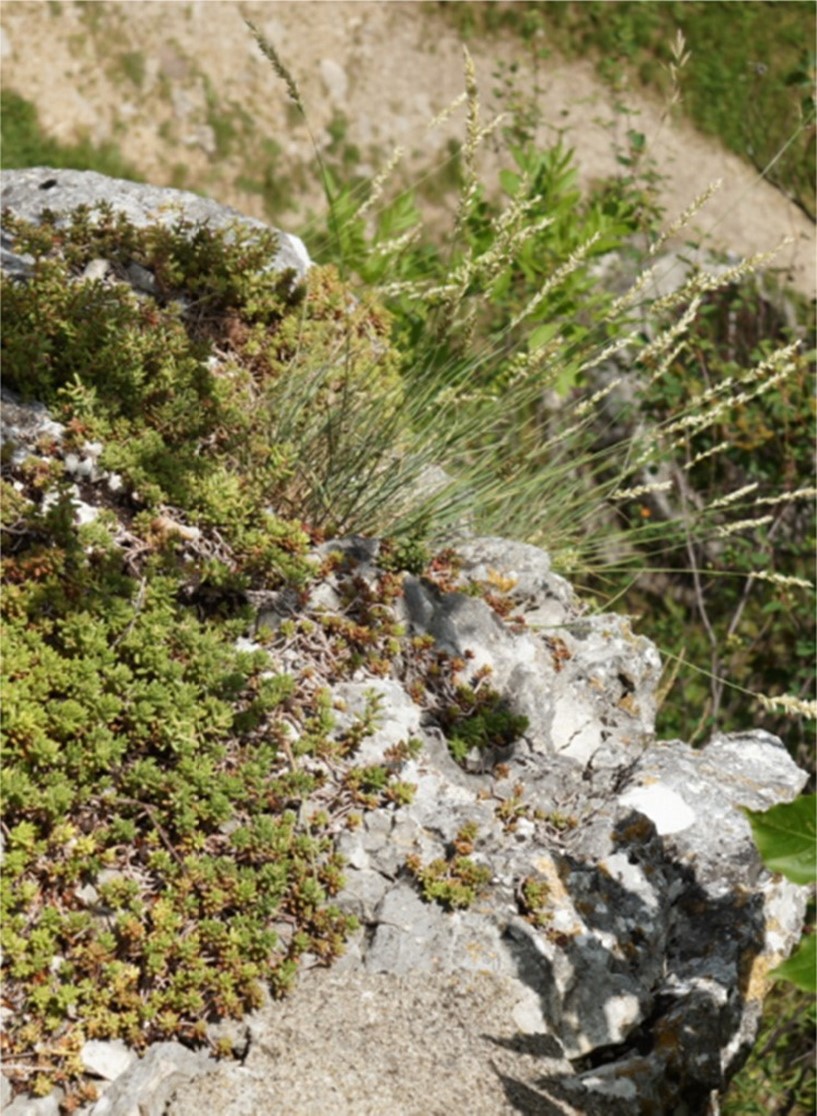
Sedums in natural habitat. Image: Jörg Breuning
Sedums on Green Roofs
In general, green roofs engineered with a (soil) profile that has a balanced air‐to‐water ratio throughout the entire profile make all plants happy. A suitable air‐to‐water ratio is in particular important on extensive green roofs where such profiles are typically only between 100mm‐150mm (4”‐6”) thick (in temperate climate zones). The most common practice to achieve a continued and suitable air‐to‐water ratio on extensive green roofs is through the use of Porous Aggregates* within the soil profile.
Some might call it the traditional method but it has proven its effectiveness over more than a century on billions square feet of green roofs around the world.
Such porous aggregates are able to store water and air at the same time. The size, porosity, chemical composition, and granular distribution of these aggregates can further improve the overall growth and resilience of Sedums and other plants.
The porosity of the material further helps to develop healthy soil organisms and improve nutrient exchange capacity by the filtering and buffering of environmental impacts and with soil temperature.
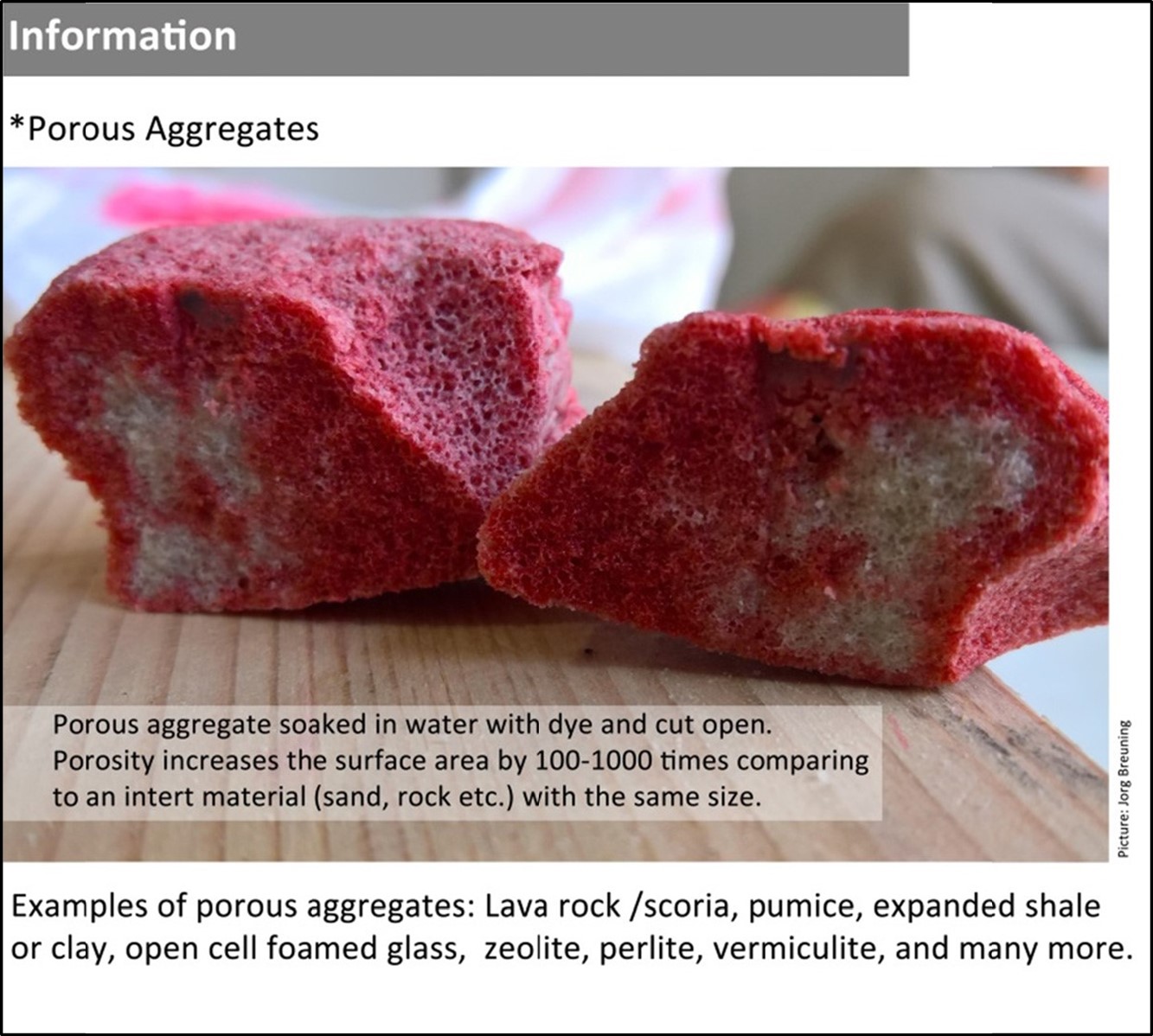
Image: Jörg Breuning
Water Retention and Detention
Green roofs are the number one stormwater management tool on buildings around the world and humans wouldn’t have come this far without innovation in this field.
In recent times ambitious innovators seem to have green roofs in their focus. They present “new” solutions to increase stormwater retention within the soil profile of green roofs. As a result, many newer green roof systems (mainly in USA/CANADA) utilize sponging elements to increase water retention and detention as a soil replacement or soil additive. Although these sponging elements hold up to 100% of the water, in my experience they also create a hostile environment to the most used plant on green roofs – the Sedums.
What happens is that in such systems the Sedums are challenged with either low water content (wilting point) that they can naturally manage or an over‐saturated soil where they have no defense system. The sponging elements expose Sedums to the double amount of extremes in the soil. These alternating extremes also negatively affect soil organisms, nutrient exchange capacity, and buffering properties of environmental impacts. These weather depending, sporadic air‐to‐water extremes also promote other plants with shorter life cycles and/or allelopathic attributes (e.g. grasses, hairy bittercress, clover, etc.). Sedums are very tough and they can deal with these burdens for a long time but not for as long as we would like to have the green roof on buildings.
Ultimately this multifold stress and man‐made problem will take a toll on the Sedums. At some point, the plants require elaborate spoon‐feeding maintenance to barely survive. Other green roofs get removed or replaced just after 10‐15 years. I have experienced comparable effects with “drainage” boards that have never been properly engineered for horizontal applications with vegetation.
The picture below shows a random assortment of typical water logging or sponging elements that in my opinion disturb natural soil profiles for succulent and drought tolerant plant species:
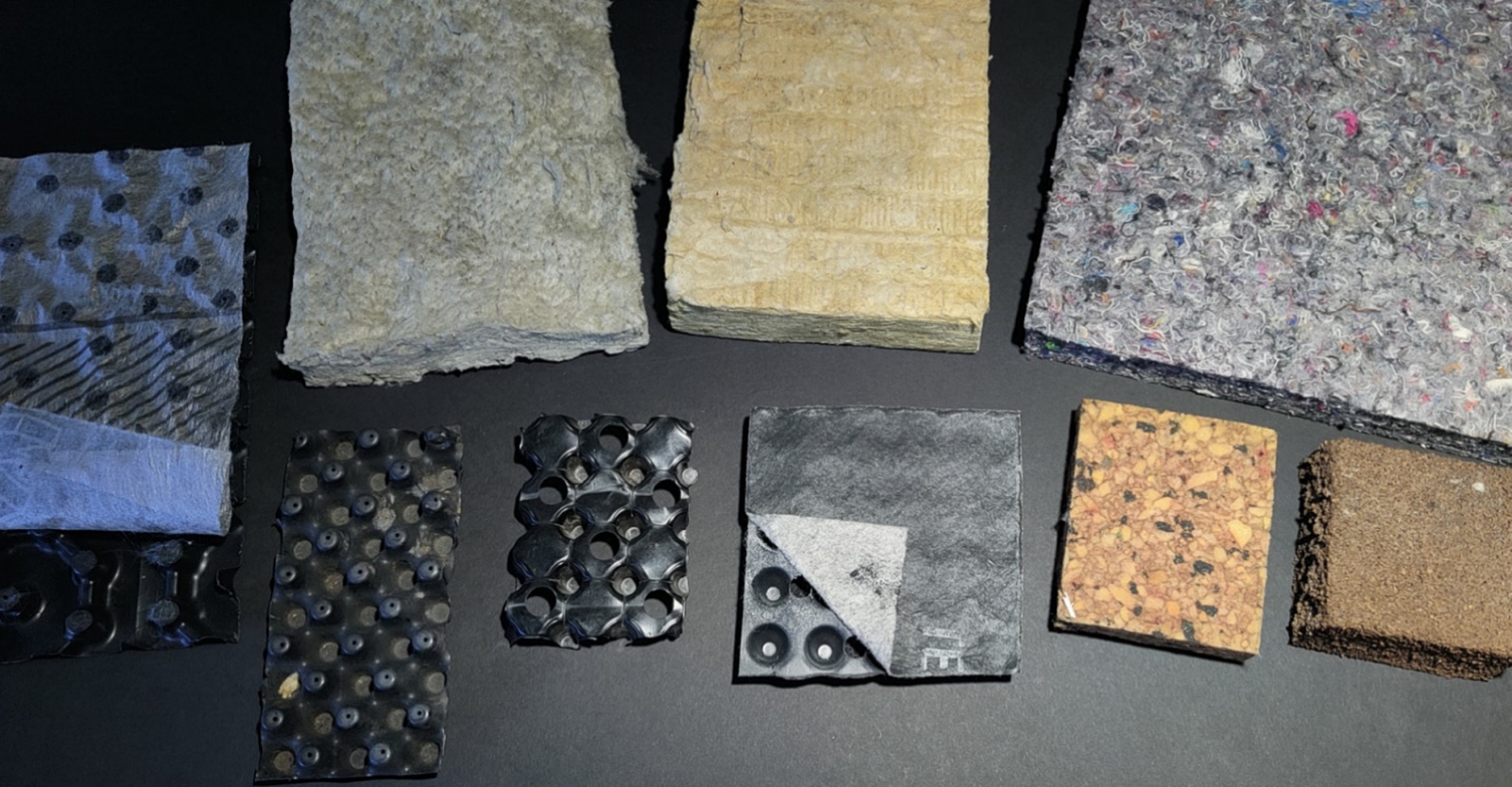
Some examples of fiber products made from mineral or plastics and typical HDPE or polystyrene boards/elements with no or very limited vertical drainage, creating lasting ponding water without effective overflow. Image: Jörg Breuning
Especially mineral or plastic fiber products compress easy, pushing air out and hardly allow recovery.

Image: Jörg Breuning
Indicator plants and reverse succession is the first sign of waterlogging caused by sponging elements or plastic plates that were never engineered for vertical drainage.
Extended oversaturation typically results in lower pH levels and with a shift in nutrient supply. Iron, Manganese, Boron, Copper, and Zinc availability likely increases.
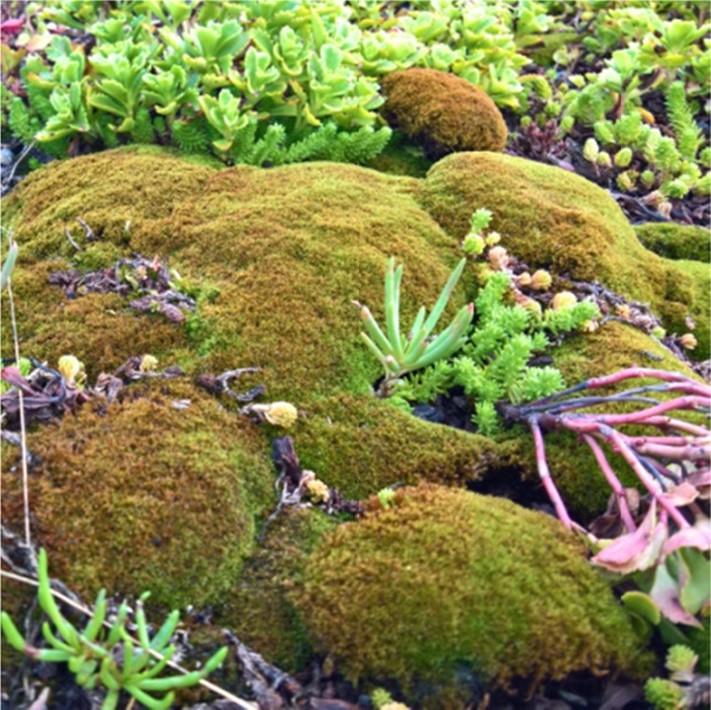
Image: Jörg Breuning
Conclusion
Stormwater engineers (mainly in North America) love precise laboratory data of sponging elements and enjoy the idea of high stormwater retention on structures. Architects like the idea because it seems a simple and clean fix to meet or exceed stormwater requirements with low weight – often forgetting that water has a specific weight on Earth. Building owners, however, are starting to realize that these systems create more costs from the beginning and substantially more cost during operation – especially after 5‐7 years. It is no surprise that building owners in regions where there are stormwater management requirements are increasingly trying to get around having to build green roofs. The perception of these building owners is that green roofs are expensive, not a good return on investment, and have a potential to create damage to the building.
Any natural systems or all solutions with plants are like a house of cards. You take one or you change one, it affects everything.
The desperate desire for data (one card) is a horrible addiction and makes people stop thinking and blind to the entire picture.
If humans want to fix their self‐inflicted environmental problems by using nature (Green Infrastructure) they should first start respecting the needs of nature and putting their own ego and profit thinking second.
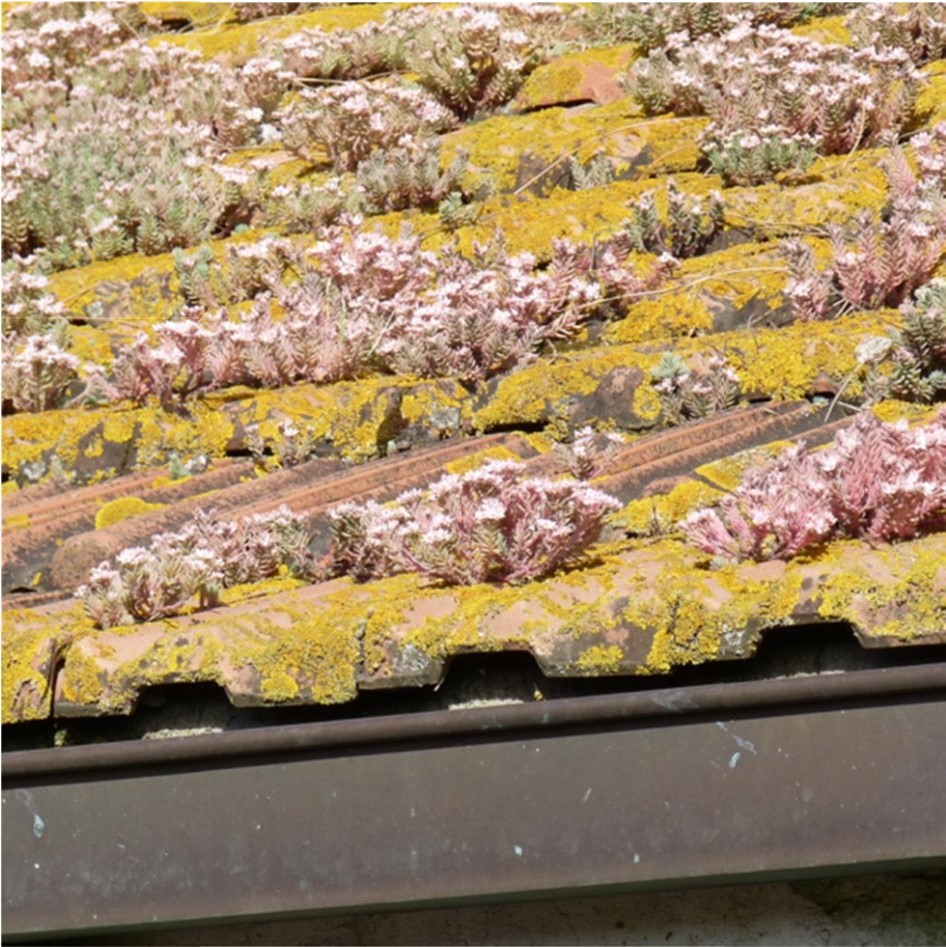
Sedum growth in semi‐arid climate on tile roof with fast run‐off. Image: Jörg Breuning
Experienced gardeners and horticulturalists will say:
“Sedums are drought tolerant and thrive in well‐drained soil. It is best to give the plant a good slow drink and allow the soil to dry out again before the next watering. Over‐watered sedums are likely to flop over and die more quickly.”
Stay tuned for a couple of follow-up articles.
~ Jorg Breuning
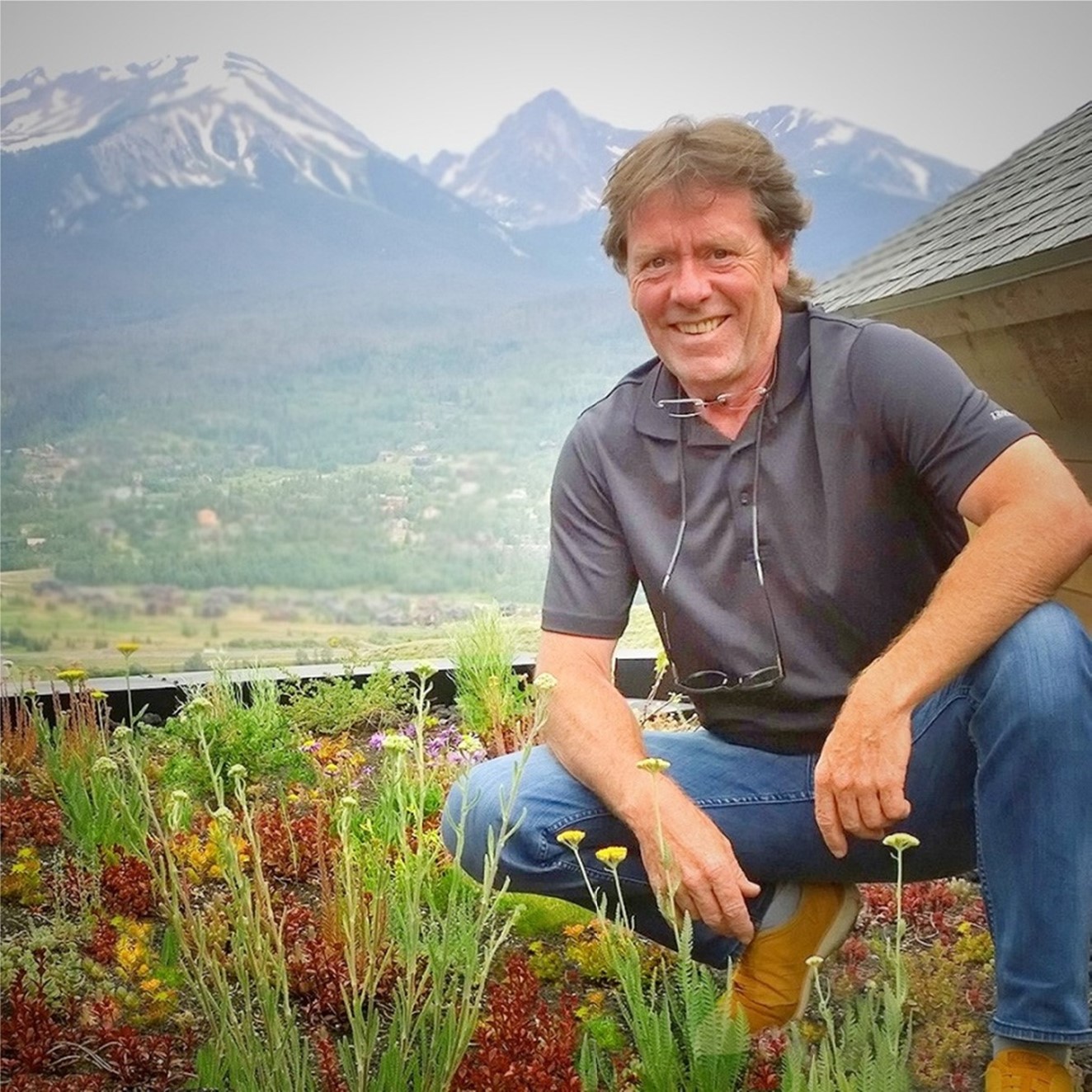
Green roof pioneer and international authority for vegetation on ground remote and ground disconnected locations in any climate zone. Information based on green roof observations, evaluations and horticultural education for over 42 years and more than 2,500 projects.
Unlike others, Jörg Breuning is one of the few people on earth who actively shaped the beginning of the modern Green Roof industry in Europe/Germany more than 4 decades ago. In addition, he introduced Green Roofs and Green Roof research to North America in 1999. Thus, he has over 42 years of experience in two fundamentally different markets for Green Roofs and Green Infrastructure (GI).
Today, Jörg Breuning’s skills in biophilic design and sustainable engineering go beyond Green Roofs, Blue Green Roofs, Solar Garden Roofs and Food Roofs and include specialties with living plants like Green Walls, Green Railroad Tracks, natural swimming pools, advanced composting technology, PV / Solar combinations with vegetation, plastic‐free Green Roofs, and product solutions within a circular economy and through urban mining. Achieving the highest level of sustainability and resilience on every project comes from pragmatic approaches, common sense, and rock‐solid education.
Jörg: “There are an increasing number of masterminds for sustainable designs, influencers for environmentally friendly solutions, and initiators for Cradle 2 Cradle principles. There are only a few that can convert these innovations into reality on small or large scale. I leave the trendy and fancy buzz words to others because I rely on realization.”
Contact Jörg at jbi@greenrooftechnology.com and visit www.greenrooftechnology.com.
 Greenroofs.comConnecting the Planet + Living Architecture
Greenroofs.comConnecting the Planet + Living Architecture
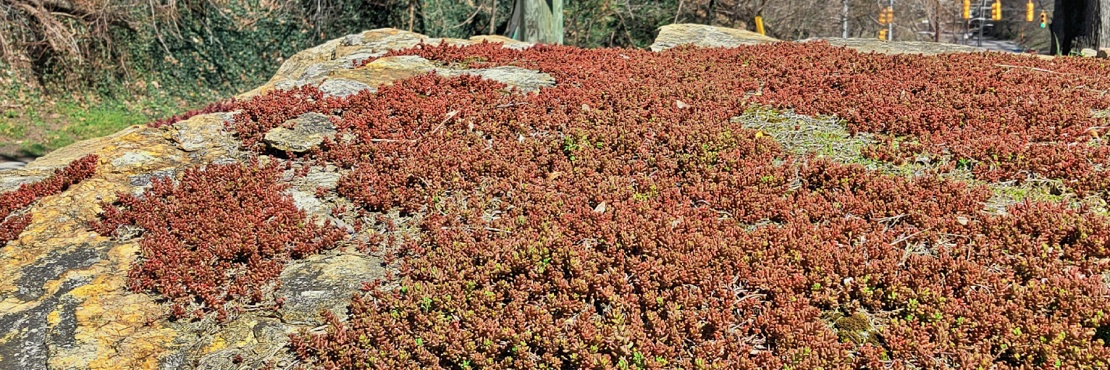





Joe
Jorg – The nature of sedums, stone crops and C4 plants is limited transpiration through stomata closure and “waxy” textures which is great for temperate climates, but also limits any claims of cooling through transpiration like other plants. While is refreshing to sit on a cool green patch of grass it is not so much on a field of sedums. Then green roofs present the problem of trying to balance enough water in the medium to allow plant survival in the harshest of locations on a roof while not filling the mediums “gas tank” with applied water such that when a storm comes in it can absorb and detain the event. A much more effective approach is to use a segmented, evenly distributed blue roof mechanism which can capture a full 2” rainfall event without the building owner being faced with the burden if trying to keep plants alive in the roof. The GSA has documented many spectacular failures of green roofs in North America as there is insufficient knowledge and skill to maintain within the building crew tasked with keeping it alive. Finally, stone crops are not the optimum plants for bees and pollinators often cited as a benefit of such green roof systems. Europe and its success with succulent green roofs is not the environment here in the states.